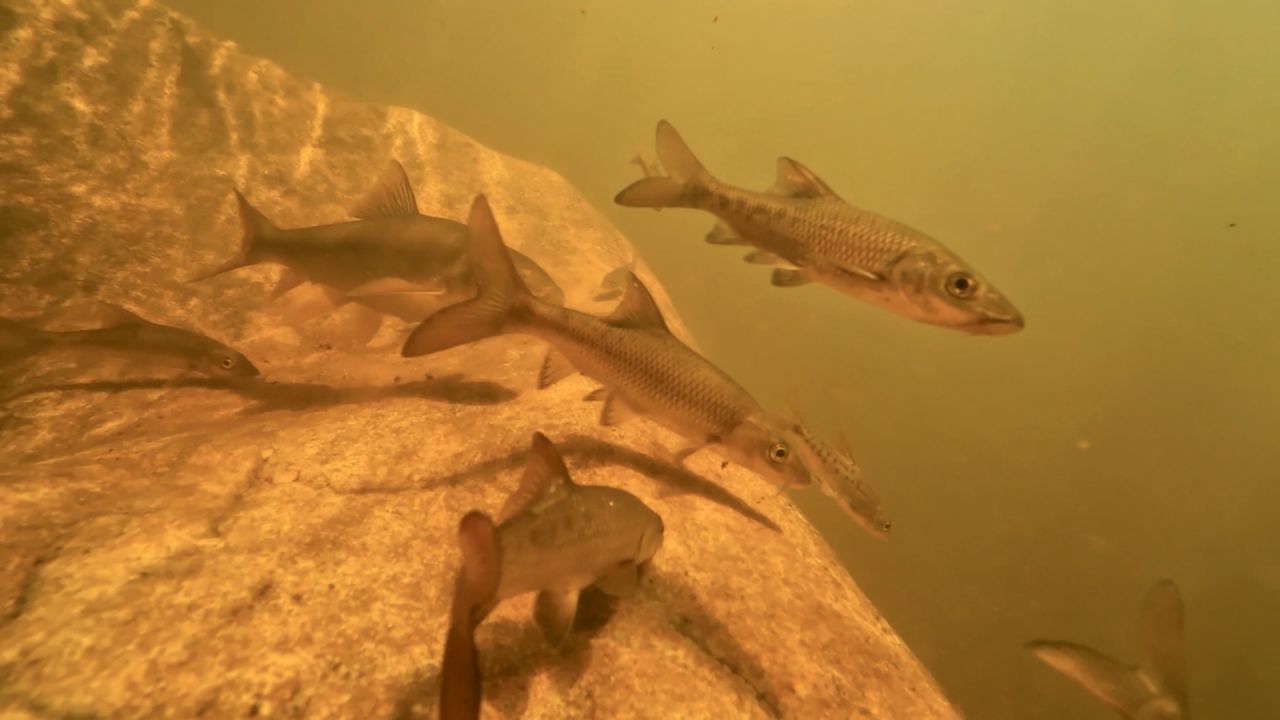Education
Conservationists Unite to Save South Africa’s Endangered Sandfish

The Clanwilliam sandfish, a freshwater fish native to South Africa’s Western Cape, is facing a significant decline in population. Once abundant, these fish are now classified as endangered, prompting a dedicated group of conservationists to take action to restore their numbers.
The sandfish, known for its distinct migrations which once stirred the waters of the region, has seen its habitat and population dwindle due to various human-related factors. Overfishing, habitat destruction, and the introduction of non-native species have all contributed to the alarming decrease in their numbers. According to the International Union for Conservation of Nature (IUCN), the sandfish is listed as endangered on the IUCN Red List, indicating an urgent need for conservation efforts.
Efforts Underway to Restore Populations
Various organizations, including World Wildlife Fund (WWF) and local conservation groups, have initiated projects aimed at preserving the sandfish. These efforts focus on habitat restoration and public awareness campaigns to educate the community about the importance of this species.
The South African government has also recognised the need for intervention. In 2023, it announced initiatives to limit water pollution and improve the management of local water resources, which are crucial for the sandfish’s survival. This governmental support is vital for the success of conservation strategies, as it provides the necessary resources and policy backing for sustainable practices.
Conservationists are employing a variety of techniques to aid the sandfish’s recovery. Captive breeding programs are being established to increase their numbers before reintroducing them into their natural habitats. These programs are designed to ensure genetic diversity, an essential factor for the long-term viability of the species.
Community Involvement and Future Prospects
Engaging local communities is a crucial aspect of the conservation strategy. Conservationists are working directly with residents in the Western Cape to foster understanding and support for preserving the sandfish. By involving the community, these initiatives aim to create a sustainable environment where both the fish and the people can thrive.
The future of the Clanwilliam sandfish hinges on the success of these collaborative efforts. As conservationists continue their work, the hope is to see a rebound in the population of this species, ensuring that future generations can witness the magnificent migrations that once defined the waters of the Western Cape.
The ongoing efforts to save the Clanwilliam sandfish serve as a reminder of the delicate balance between human activity and environmental preservation. With concerted action and community involvement, there is optimism that this endangered species can once again flourish in its native habitat.
-

 Technology5 months ago
Technology5 months agoDiscover the Top 10 Calorie Counting Apps of 2025
-

 Health2 months ago
Health2 months agoBella Hadid Shares Health Update After Treatment for Lyme Disease
-

 Health3 months ago
Health3 months agoErin Bates Shares Recovery Update Following Sepsis Complications
-

 Technology4 months ago
Technology4 months agoDiscover How to Reverse Image Search Using ChatGPT Effortlessly
-

 Technology1 month ago
Technology1 month agoDiscover 2025’s Top GPUs for Exceptional 4K Gaming Performance
-

 Technology2 months ago
Technology2 months agoElectric Moto Influencer Surronster Arrested in Tijuana
-

 Technology5 months ago
Technology5 months agoMeta Initiates $60B AI Data Center Expansion, Starting in Ohio
-

 Technology5 months ago
Technology5 months agoRecovering a Suspended TikTok Account: A Step-by-Step Guide
-

 Health4 months ago
Health4 months agoTested: Rab Firewall Mountain Jacket Survives Harsh Conditions
-

 Lifestyle5 months ago
Lifestyle5 months agoBelton Family Reunites After Daughter Survives Hill Country Floods
-

 Technology4 months ago
Technology4 months agoHarmonic Launches AI Chatbot App to Transform Mathematical Reasoning
-

 Technology3 months ago
Technology3 months agoUncovering the Top Five Most Challenging Motorcycles to Ride





















